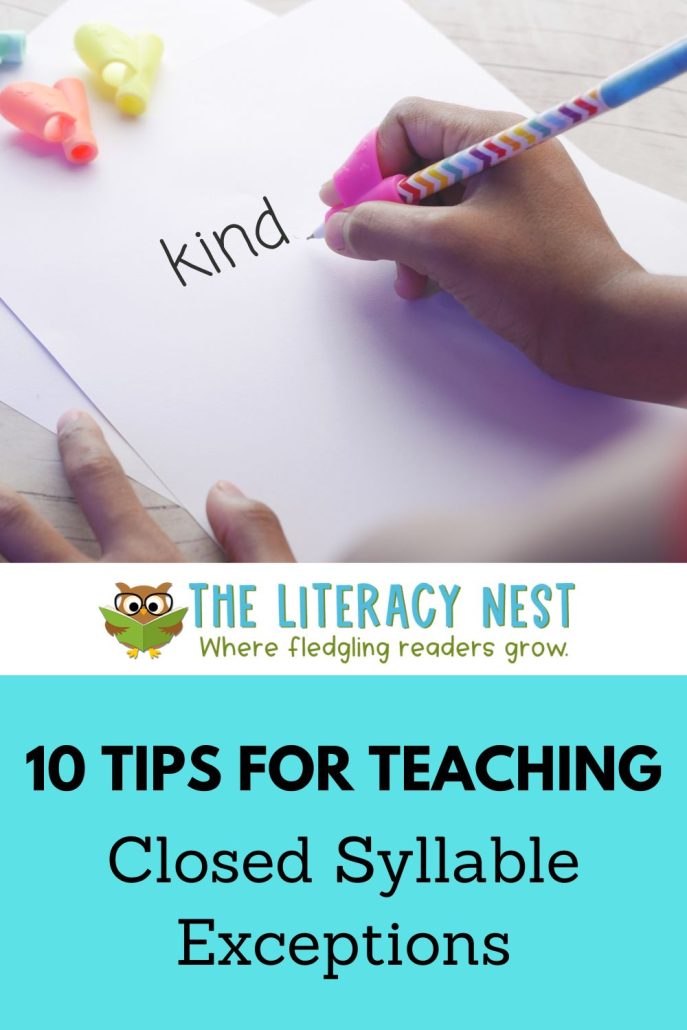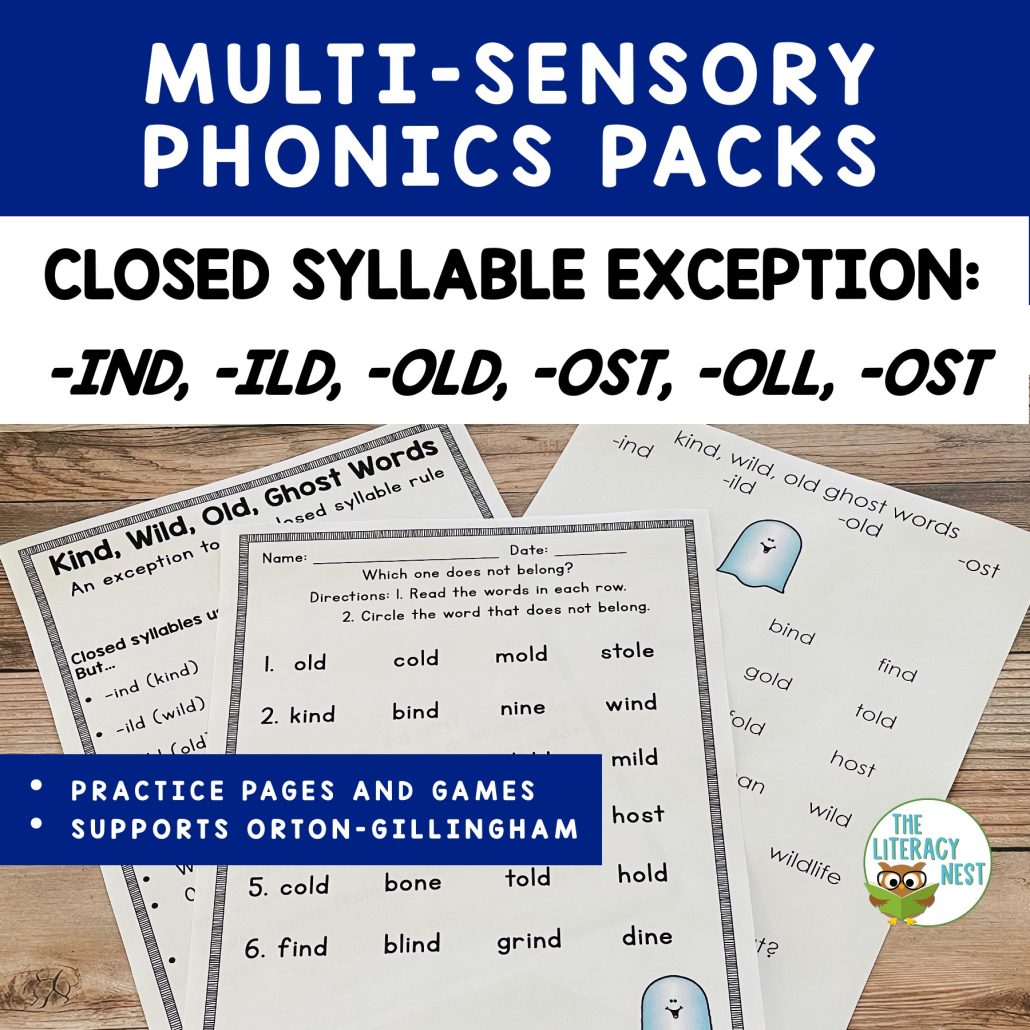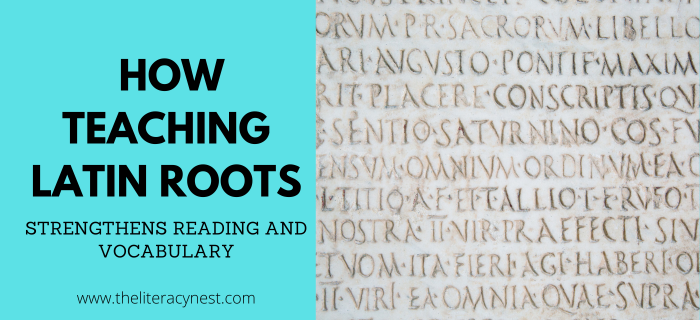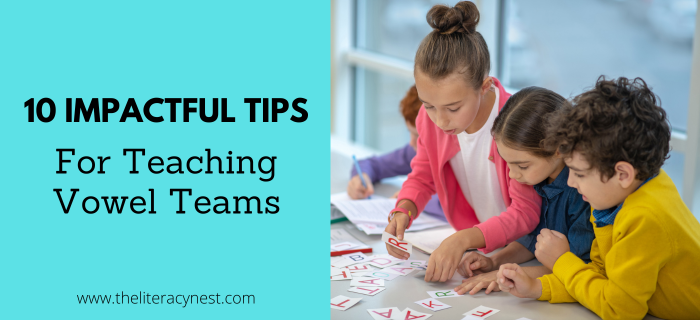10 Tips for Teaching Closed Syllable Exceptions
While the syllable types explain many spellings and pronunciations in English, we still come across some words that don’t quite work the way we expect them to. One of those is a group of words known as closed syllable exceptions. Let’s talk about teaching closed syllable exceptions!
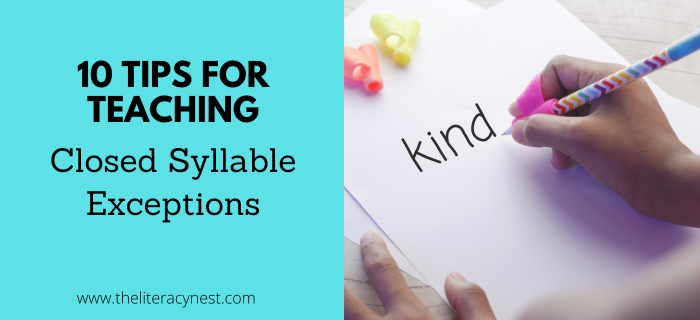
What are closed syllable exceptions?
Closed syllable exceptions are a group of words with chunks that look like closed syllables but have a long vowel sound rather than a short vowel sound as you would expect. They are exceptions because they do not make the predicted short vowel sound. These chunks are ind, ild, old, oll, olt, and ost.
To learn closed syllable exceptions, it is helpful for students to be adept with closed syllables. I think it is also helpful for students to have a few syllable types under their belt. This helps students see that rather than being a different syllable type, these are really exceptions.
I also think it is helpful for students to know -ng and -nk chunks. Because the closed syllable exceptions are easiest to learn as chunks, having other word chunks that are read and spelled as separate units can be helpful. These provide an anchor for the new learning.
3 Tips for Introducing Closed Syllable Exceptions:
Download and print our teaching closed syllable exceptions checklist!
1. Provide explicit instruction in these patterns.
Some teachers like to use “Kind wild old ghost” as a tool to help students remember these patterns.
2. Explain why these are exceptions to the closed syllable.
Explain the characteristics that they share with closed syllables (one vowel, end in a consonant) and what makes them not fit the pattern (the vowel is long).
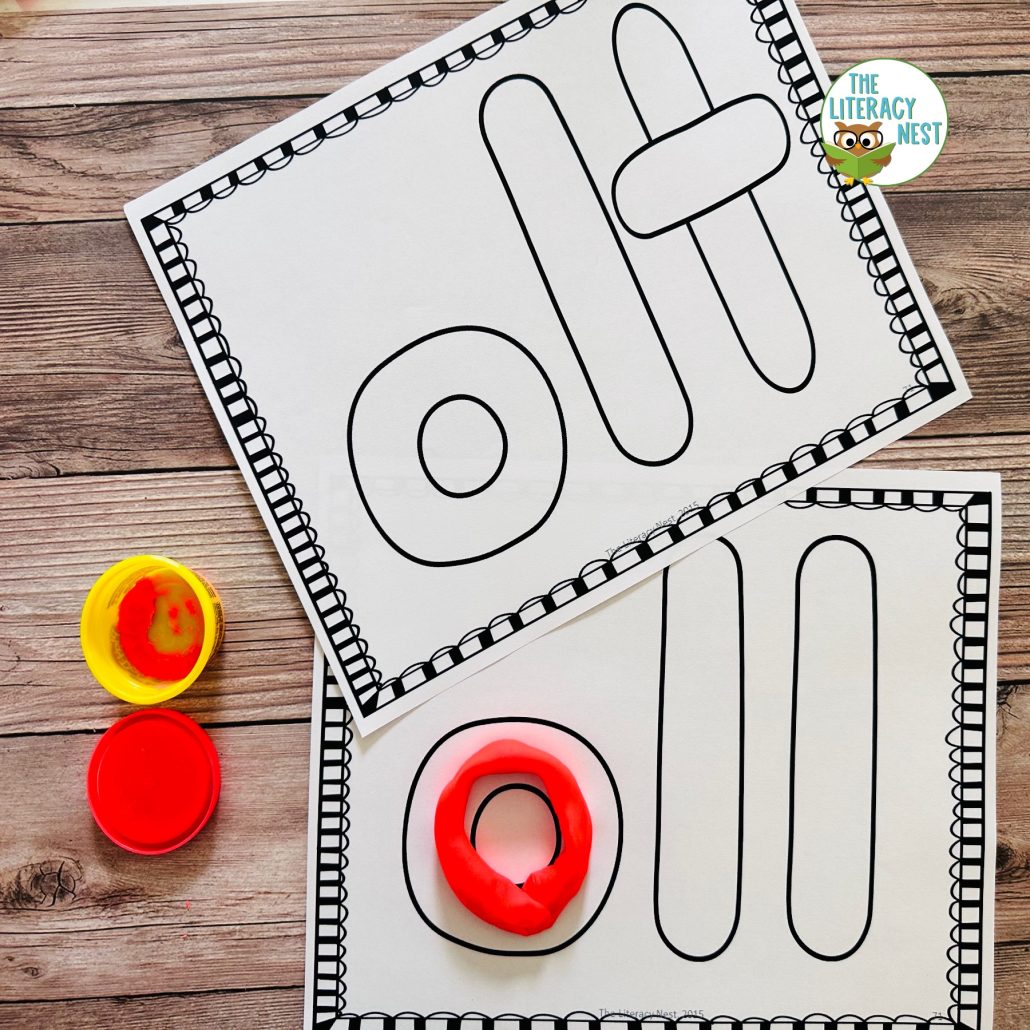
3. Give a historical context.
Closed syllable exceptions are from Anglo-Saxon words and therefore may have Old English spelling patterns.
For example, some words used to have e at the end and o used to be ou. But as we attempted to standardize spellings, we no longer used the longer spellings. Wilde is now wild, moult is now molt, and mould is now mold. This video explains some of these mysteries of modern English spelling.
Looking for help teaching closed syllables? Check out The Syllable Series Part 1: Closed Syllables!
More Tips for Teaching Closed Syllable Exceptions:
- Have a poster displayed with the grapheme, keyword, and picture as a visual cue for each of the closed syllable exceptions. Students benefit from having a visual reference.
- These can be grouped together according to what your student can handle. It is not necessary in most cases to spend a whole week on -ild. Group the chunks together and provide lots of examples. This is a time to be prescriptive based on your student’s individual needs. One student may need to learn these two at a time, while another may be able to learn all of these chunks in one lesson.
- Practice chaining and word sorting activities to make these chunks very familiar to your students. These activities make students attend closely to sequences of letters and sounds. For example: Students might build words with magnetic letters and change most to molt to mold to mild. A group of word cards can be sorted into words with each of the chunks.
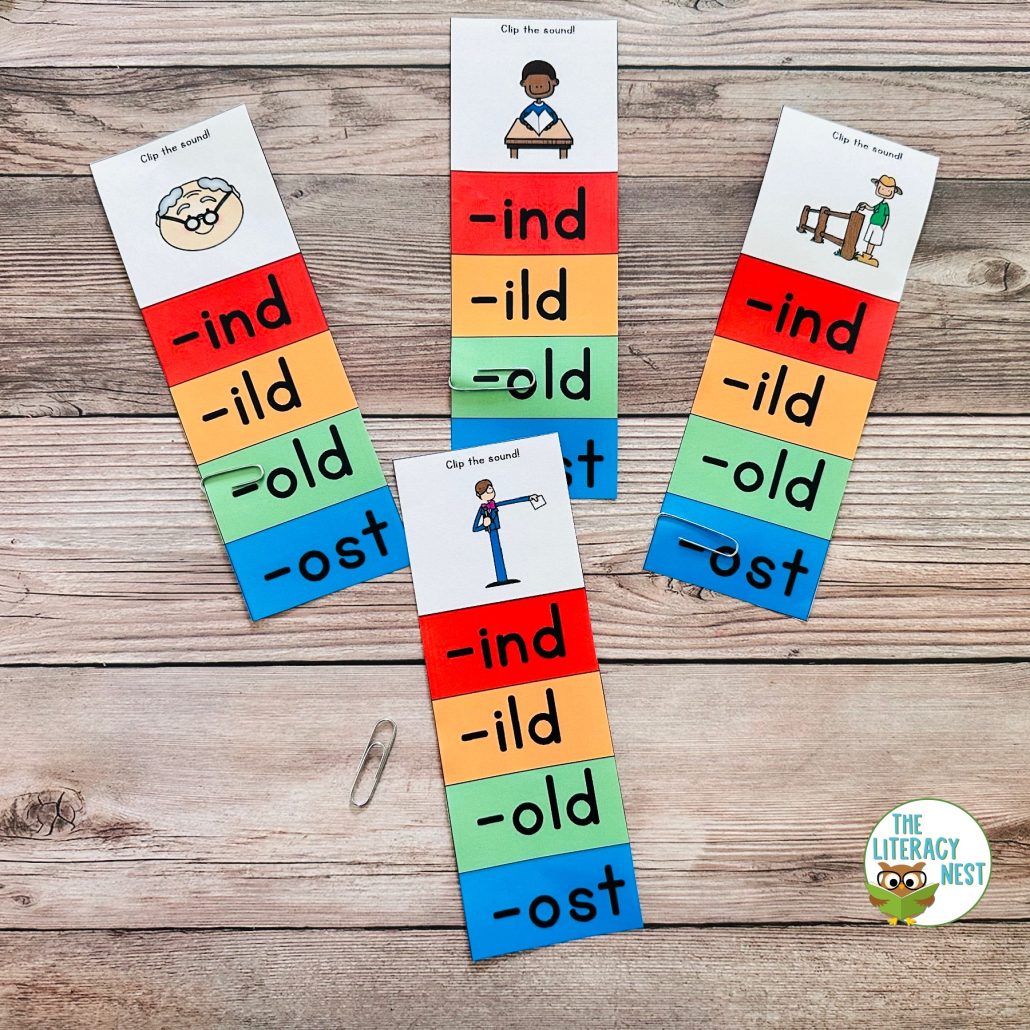
- Be prepared for exceptions to the exception (such as cost or lost), or words that can have more than one pronunciation such as wind (The wind blew.) and wind (He can wind his watch.)
- Look into the history of a few of these words and their Anglo-Saxon counterparts to pique student interest. This also helps students begin to understand the role of history in spelling.
- Play review games that focus on both encoding and decoding. Your student may find one or the other more difficult with this concept.
- Read lots of decodable texts with closed syllable exceptions to strengthen Orthographic mapping and to improve oral reading fluency.
Teaching closed syllable exceptions opens a whole lot of interesting and useful words to our students. They can in turn read more stories and decodable books. While this concept may initially seem quite complex, with deliberate teaching, most students master this fairly quickly.
Closed Syllable Exception Phonics Pack
This phonics pack has everything you need to use a multisensory approach for teaching closed syllable exceptions: IND, ILD, OLD, OST, -OLL, and -OLT. It is suitable for Orton-Gillingham instruction and other reading interventions.
You can grab it in The Literacy Nest Shop or on TpT.
And, don’t miss this fun digital FREEBIE, Closed Syllable Exception Boom Cards!
Are you looking for a list of closed syllable exceptions? Word List Builder has got you covered!
Save time searching for closed syllable exceptions! Create customized and meaningful review, build your folder of words, create templates and games, and much more in Word List Builder.
